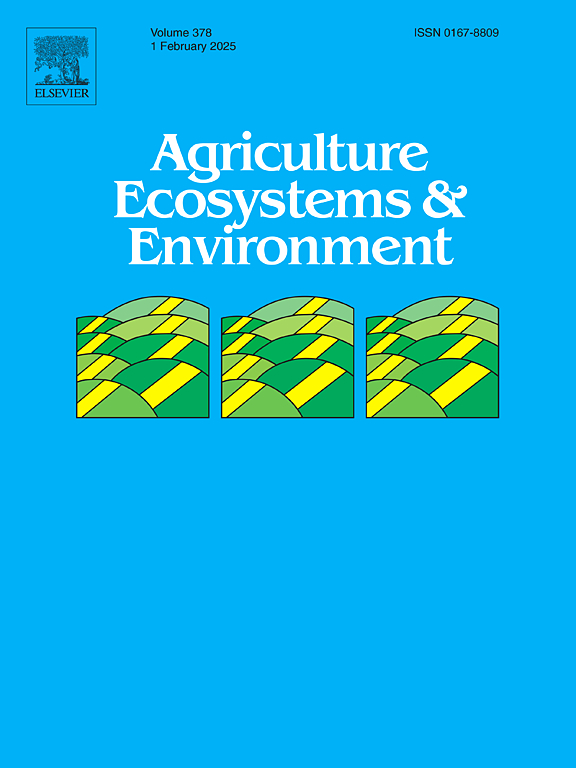Diversified crop rotation: Synergistically enhancing peanut yield and soil organic carbon stability
IF 6
1区 农林科学
Q1 AGRICULTURE, MULTIDISCIPLINARY
引用次数: 0
Abstract
Diversified crop rotations are acknowledged for their capacity to improve soil fertility and increase crop productivity through increasing plant carbon inputs. However, the microbial mechanisms involved in soil organic carbon (SOC) dynamics remain elusive, especially in the high-nitrogen peanut field. This study aimed to investigate the effects of crop rotation on peanut yield, SOC mineralization (Kc), its temperature sensitivity (Q10), and the main drivers in the rhizosphere and bulk soils. A 6-year field experiment was conducted including three cropping regimes: peanut continuous monocropping (P), peanut-Orychophragmus violaceus rotation (PO), and peanut-winter wheat-summer maize rotation (PWM). Microbial alpha diversity, community composition, and occurrence networks were characterized using 16S rRNA and fungal ITS region sequencing. Compared to P, PO increased the rhizosphere nitrate nitrogen, which suppressed root biomass and reduced the rhizosphere SOC and Q10. In the bulk soil, incorporation of labile and nitrogen-rich residue under PO increased soil mineral nitrogen, which stimulated K-strategists and reduced Kc through intensifying microbial carbon limitation. Finally, PO exhibited the lowest SOC accumulation across treatments through promoting the primed soil carbon loss. Compared to P, PWM increased the rhizosphere total nitrogen, stimulated root biomass, and enhanced the rhizosphere Kc. In the bulk soil, the low-quality residues input may alleviate the microbial carbon limitation, which not only promoted SOC stability by facilitating the microbial preferential utilization of labile carbon but also reduced Q10 through decreasing microbial biomass and increasing activities of carbon-cycling enzymes. The significant increases in microbial diversity in both rhizosphere and bulk soils of the PWM treatment also contributed to the greater SOC accumulation relative to PO. However, the theoretical increase in SOC content was offset by soil carbon loss associated with straw removal of maize at harvest. PO enhanced peanut yield by increasing the rhizosphere pH and optimizing soil microbial communities. PWM showed advantage in increasing yield over PO (51.8 % vs. 20.7 %) due to its promotion of root development, a more balanced composition of soil nutrient, and additional enhancement of microbial diversity and enzyme activities. Therefore, PWM achieved a synergistic benefit for both crop productivity and SOC stability, thus contributing to agricultural green development. This study underscores the need for properly accounting for the crop residue quality and soil initial nutrient status in devising sustainable planting model.
求助全文
约1分钟内获得全文
求助全文
来源期刊

Agriculture, Ecosystems & Environment
环境科学-环境科学
CiteScore
11.70
自引率
9.10%
发文量
392
审稿时长
26 days
期刊介绍:
Agriculture, Ecosystems and Environment publishes scientific articles dealing with the interface between agroecosystems and the natural environment, specifically how agriculture influences the environment and how changes in that environment impact agroecosystems. Preference is given to papers from experimental and observational research at the field, system or landscape level, from studies that enhance our understanding of processes using data-based biophysical modelling, and papers that bridge scientific disciplines and integrate knowledge. All papers should be placed in an international or wide comparative context.
 求助内容:
求助内容: 应助结果提醒方式:
应助结果提醒方式:


